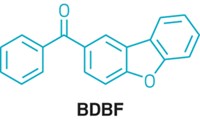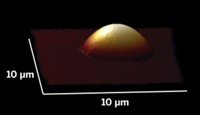Advertisement
Grab your lab coat. Let's get started
Welcome!
Welcome!
Create an account below to get 6 C&EN articles per month, receive newsletters and more - all free.
It seems this is your first time logging in online. Please enter the following information to continue.
As an ACS member you automatically get access to this site. All we need is few more details to create your reading experience.
Not you? Sign in with a different account.
Not you? Sign in with a different account.
ERROR 1
ERROR 1
ERROR 2
ERROR 2
ERROR 2
ERROR 2
ERROR 2
Password and Confirm password must match.
If you have an ACS member number, please enter it here so we can link this account to your membership. (optional)
ERROR 2
ACS values your privacy. By submitting your information, you are gaining access to C&EN and subscribing to our weekly newsletter. We use the information you provide to make your reading experience better, and we will never sell your data to third party members.
Analytical Chemistry
New Simple CO2 Sensor
Analytical Techniques: Easy-to-read chemosensor requires little power and does not pick up signals from other gases
by Rajendrani Mukhopadhyay
September 27, 2010
| A version of this story appeared in
Volume 88, Issue 40

To protect people in mines and catch the early signs of volcanic eruptions, researchers must make quick measurements of carbon dioxide gas levels. But despite the importance of these analyses in human health, environmental, and industrial applications, scientists lack a simple, quantitative, and inexpensive detection method.
Now scientists have developed a new chemical sensor that has the potential to measure the gas in locations as diverse as volcanoes and submarines (J. Am. Chem. Soc., DOI 10.1021/ja103947j).
Currently, researchers measure CO2 using electrochemical and infrared methods, but both have pitfalls. Electrochemical sensors require significant amounts of power, because they operate at high temperatures. Meanwhile, carbon monoxide, which often coexists with CO2, interferes with commercial IR sensors, because the gas absorbs a similar IR wavelength range as CO2,
So materials chemist Ben Zhong Tang of The Hong Kong University of Science and Technology, and colleagues designed a new detection system that required little power and was unaffected by CO.
In their system, molecules of 1,1,2,3,4,5-hexaphenylsilole (HPS) float in an organic solvent, dipropylamine (DPA). HPS has six phenyl rings that stick out like spokes from a central silole group. The rings normally rotate around the bonds that connect them to this hub.
When CO2 bubbles through this mixture, it reacts with DPA to produce a viscous, polar ionic liquid. The liquid slows the phenyl rings' rotation and pushes the HPS molecules together. As the molecules aggregate, they fluoresce (C&EN, Oct. 8, 2001, page 29). Because CO2 and DPA generate more ionic liquid as gas concentrations increase, the fluorescence intensity mirrors CO2 levels.
While electrochemical and IR methods are only useful for analyzing gas mixtures that contain less than half CO2, this new approach can measure up to 100% CO2. Also the sensor operates at room temperature and requires little energy or expensive materials.
The system has potential as a field instrument, Tang says, because "it only needs a handheld UV lamp as an excitation source and its output is visible to the naked eye, which facilitates on-site decision-making."
Analytical chemists Sergey Borisov at the Graz University of Technology in Austria and Ziling (Ben) Xue at the University of Tennessee, Knoxville call the sensor novel and innovative. "It's especially good for high concentrations of CO2 which are present in volcanic eruptions, power plant emissions, or mines," Xue says.
Borisov cautions that the system in its current form is not practical, because the DPA readily evaporates. But with optimization, he says, the system could make an excellent "sensor for imaging purposes."




Join the conversation
Contact the reporter
Submit a Letter to the Editor for publication
Engage with us on Twitter